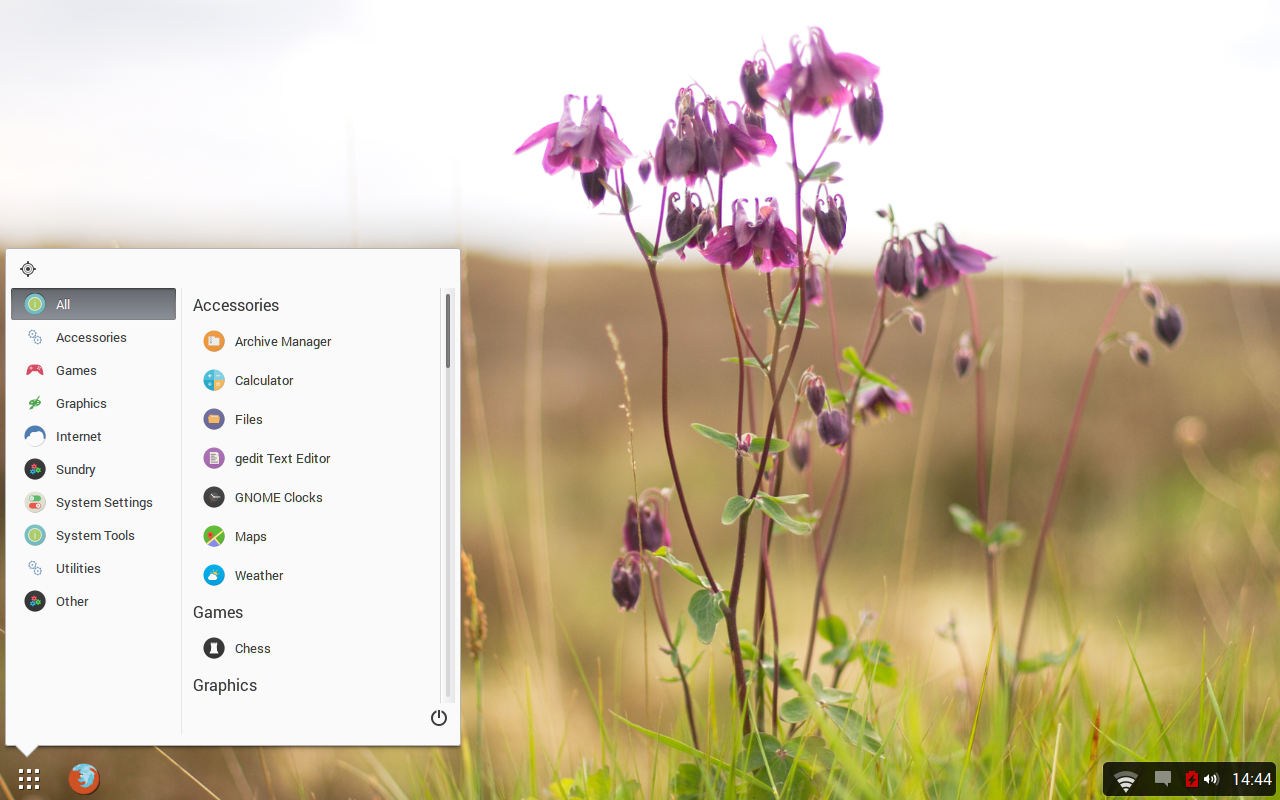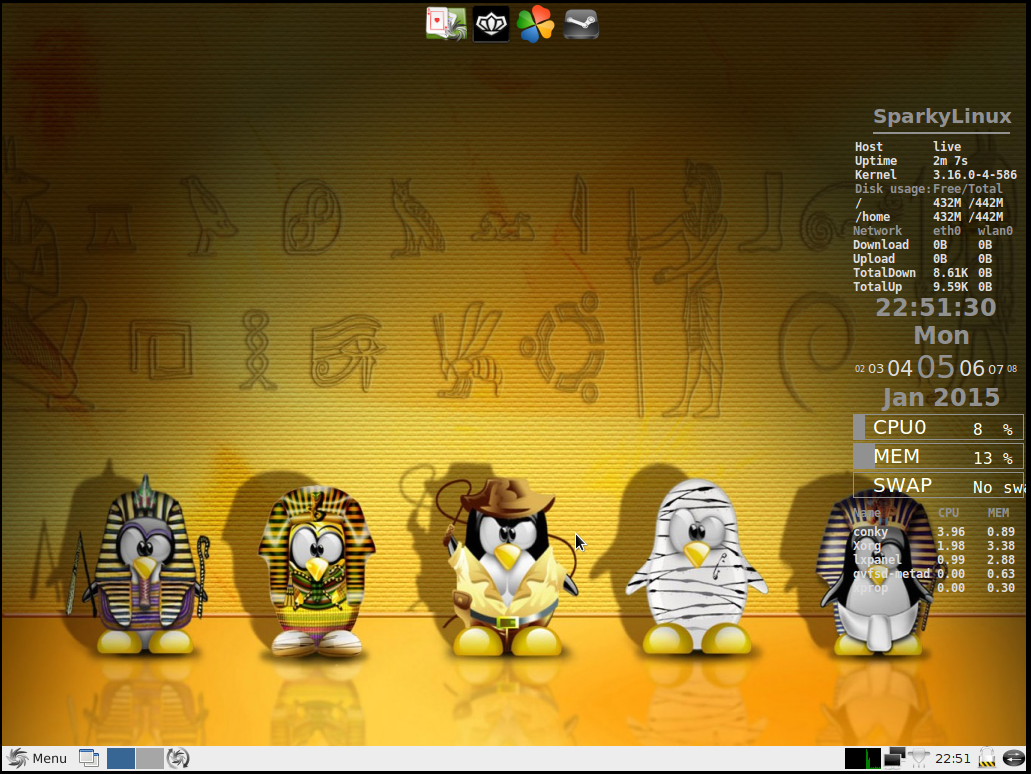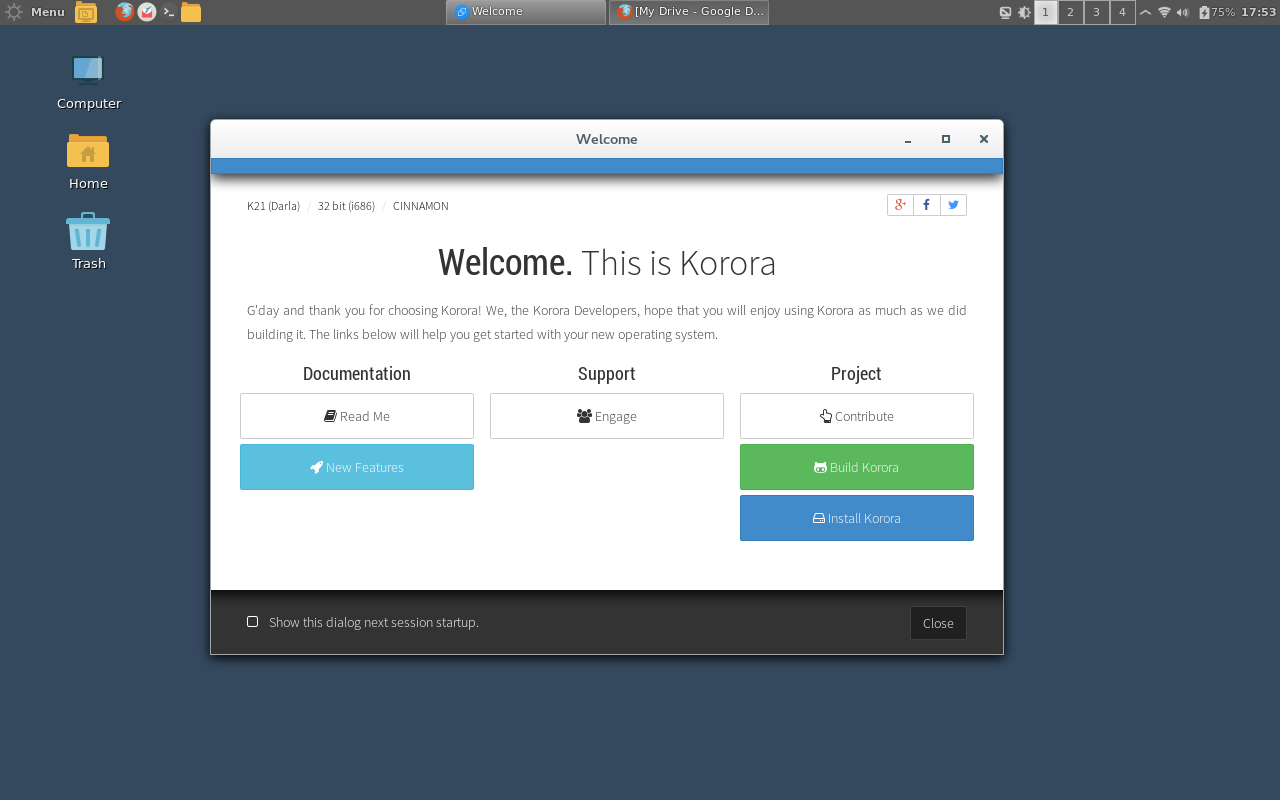There was a time when new Linux distributions popped up on what seemed like a daily basis. They came and went so fast, you might have completely missed their short lives. That’s not so much the case these days. Linux distributions arrive a bit less frequently and, when they do finally arrive, tend to have a bit more staying power.
Why is that? My guess would be that the stable of standard distributions has become so strong, it’s hard for competition to stand up to the likes of Ubuntu, Arch, Mint, Fedora, SUSE, and Debian. That doesn’t mean, however, that new distributions don’t try to take down the mighty standard bearers. In fact, there are a few distributions that could give those kings and queens of Linux a run for their money this year. Which ones, you ask? Let’s take a look at what I believe will be the distributions to watch in 2015.
1. Evolve OS
There is a reason Chrome OS and Chromebooks are so popular (other than their cost) ─ they are incredibly simple to use. Why? The Chrome OS desktop is an elegant, user-friendly interface that anyone can sit down with and immediately use. The developers of Evolve OS have taken a page from the Chrome OS design book and created the Budgie desktop. Budgie is not a fork of another desktop ─ it is built from the ground up. Both Evolve OS and Budgie are in alpha, so it’s not the most stable platform out there, but even running Evolve OS from a live ISO, you can see where the project is going and how incredibly simple it will be to use.
When you are exposed to this distribution, your first thought might be that Evolve OS is about the desktop ─ and a reaction to the current crop of desktops for the Linux platform. You are experiencing a shift from what some might consider desktops with “too many bells and whistles” or “too profound a shift in design.” Evolve OS makes the Linux desktop as simple and graceful as possible, without turning the desktop metaphor completely on its head.

2. SparkyLinux GameOver Edition
Are you ready to play a game?
SparkyLinux is yet another addition to the “lightweight” category of Linux distributions. It’s based on Debian testing, is a rolling release distribution, offers a number of different desktops to choose from (from LXDE, Enlightenment, Openbox, JWM, and Mate desktops), and offers support for most wireless network cards.
But SparkyLinux offers another flavor that will appeal to a large cross section of Linux users ─ something that few other distributions are taking advantage of. SparkyLinux has an edition focused specifically on gamers ─ SparkyLinux GameOver Edition. With this edition, SparkyLinux adds: Steam, Steam Launcher, WINE, Playonlinux, and Desura. Along with the standard gaming tools/services, the GameOver edition includes Sparky APTus Gamer ─ a small tool that allows you to easily install all the available system’s and machine’s game emulators (such as EPSXE ─ PSX emulator, Kega Fusion ─ Sega Mega Drive/Genesis emulator, and PPSSPP ─ PSP emulator).

3. Korora
Korora was born out of the desire to make Linux easier for new users, while not sacrificing features and power for the experienced. Korora is a Fedora remix that allows you to choose between the KDE, Mate, Cinnamon, GNOME, and XFCE desktops and includes a number of packages that Fedora cannot ship (due to licensing issues). Thanks to those extra packages, Korora just works out of the box ─ no need to add repositories for the likes of music or video playback. You will also find pre-configured repositories for the likes of:
-
Adobe Flash
-
DropBox
-
Google Chrome, Google Earth and Google Talk plugin
-
RPMFusion
-
VirtualBox.
In addition to all of this, Korora includes a package called Pharlap, which makes the installation of third-party drivers (such as for NVIDIA graphics) as simple as installing an app.
The Korora beta release (Korora 21 ─ Darla) also includes a new tool, called Lens. Funny thing about Lens is that Korora is keeping hush hush about what this tool actually is. If I had to take a guess on what Lens is, I would say it is a search feature in line with Ubuntu Unity Scopes.

4. Ozon OS
If you’ve used Linux long enough, you’ve heard of the Numix Project. Numix has been, for some time now, behind some the best looking themes for both GNOME and Ubuntu. So it makes perfect sense that the designers and developers of the Numix Project would move on to develop their own flavor of Linux. That is what Ozon OS will be.
There’s very little to see at the moment, but Ozon OS will be based on Fedora and will have a Numix-flavored spin on the GNOME desktop. What’s even more interesting about this project is that it is partnered with Nutrix, which sells specialty Numix themes as well as desktop PCs. Could this be the beginning of one of the first-ever Linux distro developer/resellers? If the Numix team can pull off a stunning distribution and blend it seamlessly with fantastic hardware, this could very well be the start of something quite special. Nitrix already sells inexpensive, tiny form factor PCs (check out the $230.00 NXQ). If Ozon OS and Nitrix play their cards right, they could easily become one of the main darlings of the Linux community in 2015.
Every year new Linux distributions pop up and promise something new and game changing. I believe this time around, the claims certainly have a chance of changing the way Linux is seen by a number of user groups. Whether you’re an average user, a gamer, a power user, or some hybrid user in need of a desktop to perfectly suit your needs, I believe 2015 will bring to light some projects that will be right up your alley.


